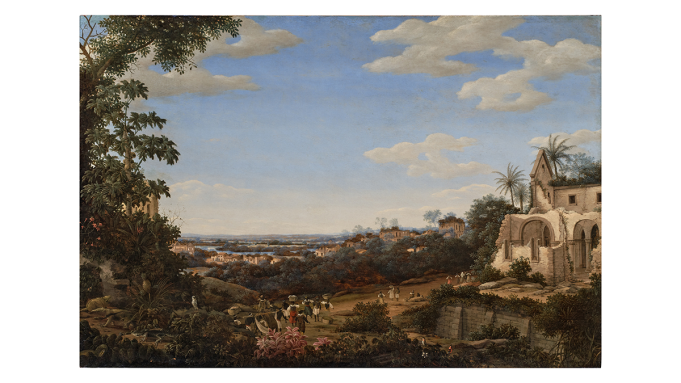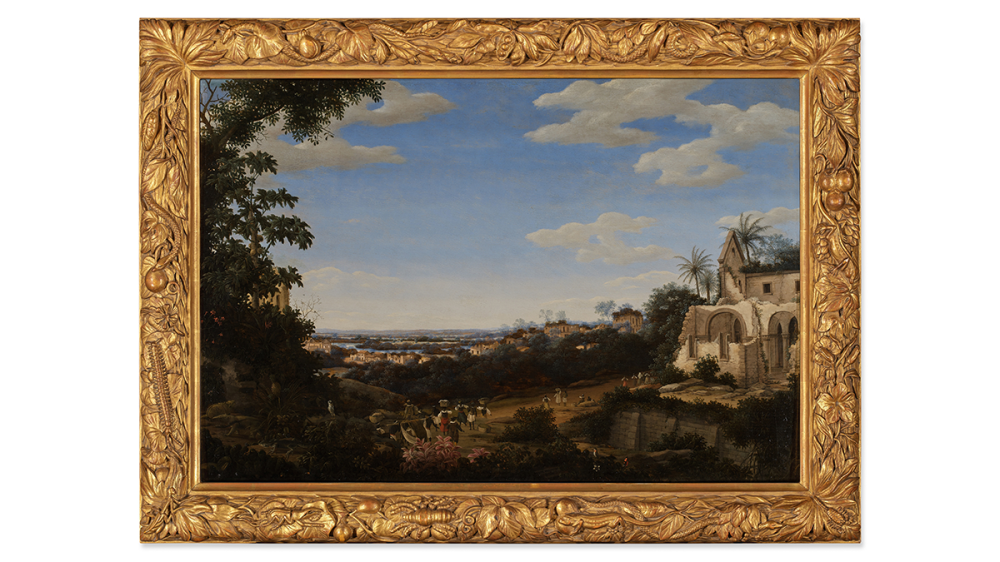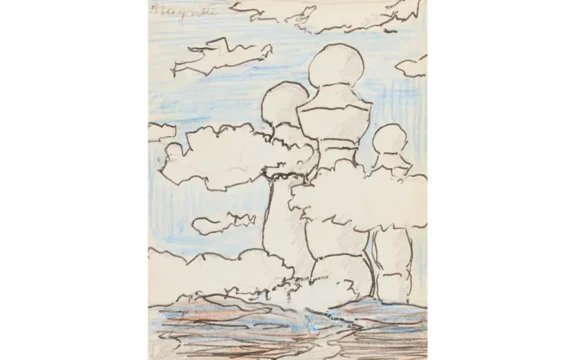A grimy old painting recovered from an attic or a barn that turns out to be priceless: Fans of Antiques Roadshow will recognize the thrilling trope but also appreciate just how rare an occurrence it actually is.
In 1998 George Wachter, chairman and co-worldwide head of Old Master paintings at Sotheby’s, heard about a painting that had been pulled out of, well, a barn attic. “It was filthy, black, dirty," Wachter tells Robb Report. “You could hardly see it."
In less than two minutes of bidding, it sold Wednesday at the auction house with a hammer price of $6 million ($7.37 million with fees), a record for Frans Post, the Dutch Old Master who painted it some 359 years ago. (His previous auction record was $4.5 million, achieved at Sotheby’s in 1997.)
View of Olinda, Brazil, with Ruins of the Jesuit Church went on the block as part of the single-owner sale of Jordan and Thomas A. Saunders III’s impressive collection of Old Masters, which Wachter was instrumental in assembling. Despite the piece’s condition back in the ’90s, Wachter had a hunch about the oil on panel, and early in his collaboration with the Saunderses he encouraged them to acquire it. “I said, ‘This is a killer,’" Wachter recalls. “And so they trusted me because they couldn’t see it. It was jet black."

Sotheby’s
The trio enlisted Nancy Krieg, who was the premier conservator of Dutch and Flemish paintings in New York, to restore it. First, she carefully “opened a tiny window" in the sky of the landscape, according to Wachter, “and it became blue and white, and it was just incredible."
Krieg then gave the piece a thorough cleaning with cotton swabs and solvents, which revealed the charming pastoral scene visible today. “There was a little anteater in the corner, and all these animals running around and all the different kinds of figures," Wachter marvels.
“It’s an art and a science, the process of cleaning," says David Pollack, senior vice president and head of Old Master paintings at the auction house.
Prior to the sale, Sotheby’s placed a $6 million to $8 million estimate on the painting. Its value derives not only from its quality but also from its place in art history. While most 17th-century Dutch artists concentrated on familiar, local landscapes and the rising merchant class who formed their clientele, Post journeyed to Brazil, then a colony of the Netherlands. There he became one of the first European artists to take landscapes of the New World as his subject. He drew and painted what he saw there for several years—and continued to dine out on his adventures for the remainder of his career back in his hometown of Haarlem.
Pollack says Post painted View of Olinda, Brazil, with Ruins of the Jesuit Church, among many other works, from memory and/or sketches. “This would be one of his greatest," he says.
Post was highly collectible even in his lifetime. “He was painting for a very open, ready market," Pollack notes. “This was his calling card, these views of Brazil. And to have something on this scale certainly ranks it in the top tier, no doubt." The panel measures 23 ¾ by 35 5/8 inches, which is on the large side for the artist.
Pollack says the painting, which is signed F. Post and dated 1666, moved through Parisian collections in the 18th century and was bought in the 19th century by the dealer Charles Simon for 160 francs, most likely on behalf of Cardinal Joseph Fesch, Napoleon Bonaparte’s maternal uncle, who had a voracious taste for fine art—and a budget to match. He acquired a reported 17,000 works of art, some the spoils of his nephew’s wars. (He bequeathed a thousand paintings to his hometown of Ajaccio, on the French island of Corsica, which formed the basis of Musée Fesch.)
The piece then ended up in a private collection in Connecticut. It’s unclear who exactly banished it to the barn or when—though Wachter speculates that “it had probably been there 100 years." But eventually someone uncovered it and consigned it to a London gallery, from which Wachter arranged the sale to the Saunderses. After its makeover, the painting long hung in their Park Avenue apartment, where it held special meaning for Tom, who died in 2022. “Tom was obsessed by it," Wachter says.
From the article by Julie Belcove








